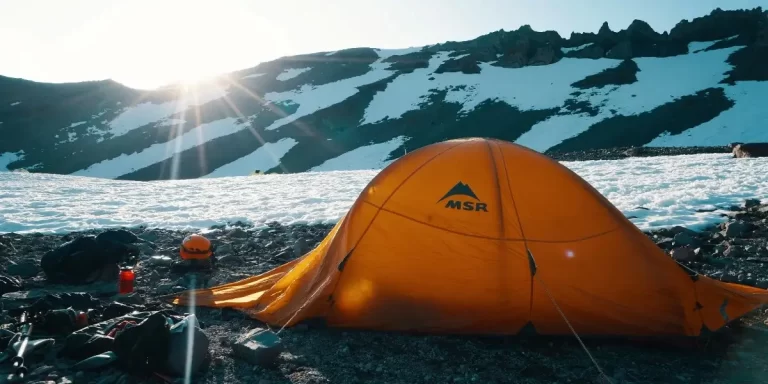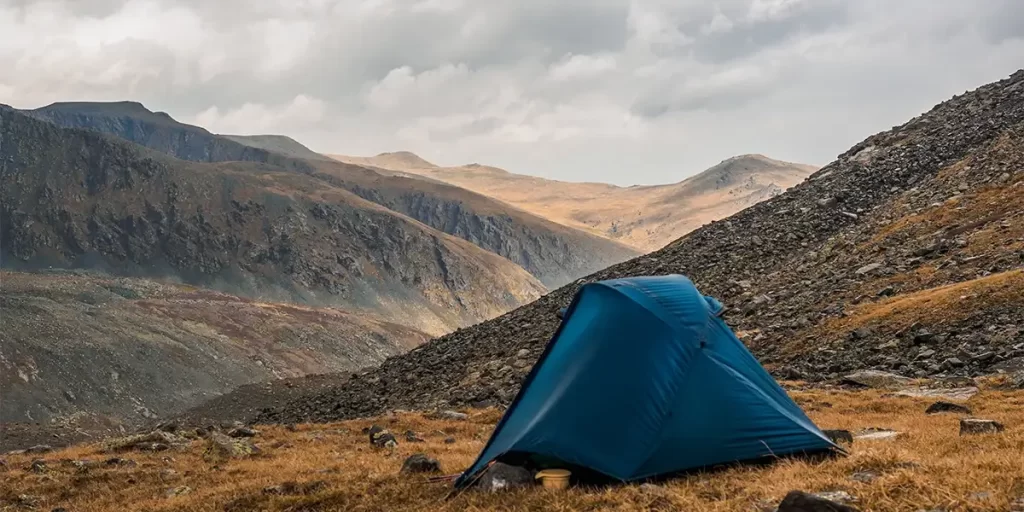

You are in search of a tent, and the age-old debate lies before you: 3-season vs 4-season tent – which one is right for you?
In this comprehensive post, we’ll outline differences between 3-season and 4-season tents and when to opt for each. Let’s dig in.

A 3-season tent is designed for use in milder conditions during spring, summer, and fall. They prioritize lightweight portability for backpacking and fast-paced hiking trips when you want to move quickly and pack lightly.
The main characteristics for 3-season tents are:

4-season tents excel in extreme and winter conditions, emphasizing durability and warmth over ventilation and weight. While pricier and heavier, they offer comfortable camping in harsh conditions that challenge lighter shelters.
The main characteristics for 4-season tents are:
Now that we’ve covered the general uses and priorities of each tent type, let’s look at some key differences between 3-season and 4-season tents.
3-season tents focus on lightweight materials and compact poles for backpacking, while 4-season models use heavier materials and robust poles, adding bulk and weight.
| 3-Season | 4-Season | |
|---|---|---|
| Weight | 2-5 lbs (900-2300g) | 5-10 lbs (2300-4600g) |
| Packed Size | Smallest when packed | Bulkier when packed |
| Portability | Highly portable for backpacking | Heavier and harder to transport long distances |
4-season tents are built tougher to handle extreme weather, while 3-season tents use lighter duty materials.
| 3-Season | 4-Season | |
|---|---|---|
| General fabrics | Nylon, polyester | Ripstop nylon, polyester |
| Denier/Thickness | 10-30D fabrics | 30-70D thick fabrics |
| Poles | Lightweight aluminum | Tempered aluminum, carbon fiber |
| Pole Structure | Minimal cross poles | Many extra braces and poles |
| Stakes | Average stakes | Beefy stakes for snow |
| Weather Resistance | Moderate rain, wind | Heavy snow, gale winds, freezing rain |
3-season tents use plenty of mesh panels for excellent ventilation but less insulation, noticeable when temperatures drop below 30 degrees Fahrenheit.
| 3-Season | 4-Season | |
|---|---|---|
| Mesh Panels | Extensive panels throughout the canopy for maximum airflow | Limited mesh to prevent heat loss |
| Doors | Mesh doors backed by rainfly | Solid doors with partial mesh and rainfly backing |
| Vents | Multiple vents throughout rainfly and roof | Vents for moisture management can open/close as needed |
| Breathability | Excellent airflow | Reduced airflow but helps retain warmth |
The simpler structure and smaller size of 3-season tents allows most to set up quickly and easily compared to more complex 4-season models.
| 3-Season | 4-Season | |
|---|---|---|
| Pole Structure | Pre-attached body and rainfly, clip to poles | Separate body and rainfly, connect to many pole joints |
| Pole Assembly | Few flexible poles with grommets | Multiple rigid poles with sleeves |
| Staking Required | Minimal staking to corners | Complete staking along walls, guylines |
| Ease of Setup | Often freestanding, fast & simple setup | Requires staking, more time and effort to pitch properly |
In terms of cost, 3-season tents are typically cheaper than 4-season models. They use more affordable fabrics and materials, fewer poles, and incur lower shipping costs due to their lighter weight.
However, the bomber construction and versatility of 4-season tents can make them a sound long term investment if you camp in a variety of conditions. Here are some typical price ranges:
| 3-Season | 4-Season | |
|---|---|---|
| Basic Models | $100 – $250 | $250 – $500 |
| Mid-Range Models | $250 – $500 | $500 – $800 |
| High-End Models | $500 – $1,000+ | $800 – $1,500+ |
So, we’ve covered the pros and cons of 3-season vs 4-season tents. Now, it’s decision time. After considering the traits of each we discussed earlier, when should you go for one over the other?
Choose a 3-season tent if:
Choose a 4-season tent if:
Many companies offer “3.5 or 3-plus season tents” that blend attributes of both types:
Camping in these tents is a great idea if you face different weather conditions throughout the year while still caring about the weight of your gear.
For instance, the Lanshan Floating Cloud allows you to switch to a 4-season inner mesh, essentially turning it into a reliable 3-plus season tent. You can also find other tents with an optional snowskirt for added adaptability.
First, we want to thank you for surviving the age-old 3-season vs 4-season tent battle.
We hope this guide has clarified the key distinctions between these tent types. Rather than relying on their seasonal labels, it’s more practical to consider their specific design purposes. And if you are going the label way, make sure that these labels deliver on their promises by checking out product reviews.
Selecting the right tent ensures your safety and comfort in the great outdoors. So, conduct thorough research and choose wisely based on the conditions and seasons you anticipate encountering. If done right, you won’t have to read this post ever again. Best of luck on your next adventure.
Interested in ultralight 3-season or 4-season tents? Check out our TOP 5 guides for the lightest options available.
Go for a 3-season tent if you’re all about keeping it light, your adventures are mainly in spring, summer, and fall, and you only expect mild weather challenges. On the other hand, opt for a 4-season tent if you need solid protection against heavy snow and storms, value spacious interiors, embark on extended trips in alpine settings, and don’t mind a bit of extra weight.
When it comes to cost, 3-season tents are usually cheaper than 4-season ones. That’s because they use less expensive materials and fabrics, have fewer poles, and cost less to ship due to their lighter weight. Yet, if you camp in various conditions and want a tent that’s tough and versatile, the sturdy build of 4-season tents can make them a smart long-term investment.
4-season tents are not ideal for summer camping as they can trap heat, causing temperatures inside to be 10-20°F (5-10°C) higher than the outside, due to limited airflow.
No, you usually don’t have to use a 4-season tent for most camping and outdoor activities. A 3-season tent is good enough for spring, summer, and fall in many areas. Some manufacturers also offer 3.5 season tents, which work well for tougher conditions when necessary.